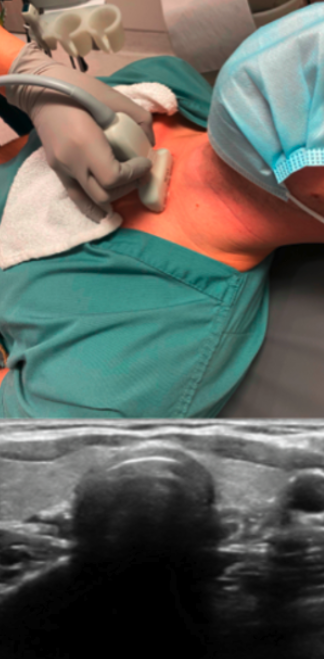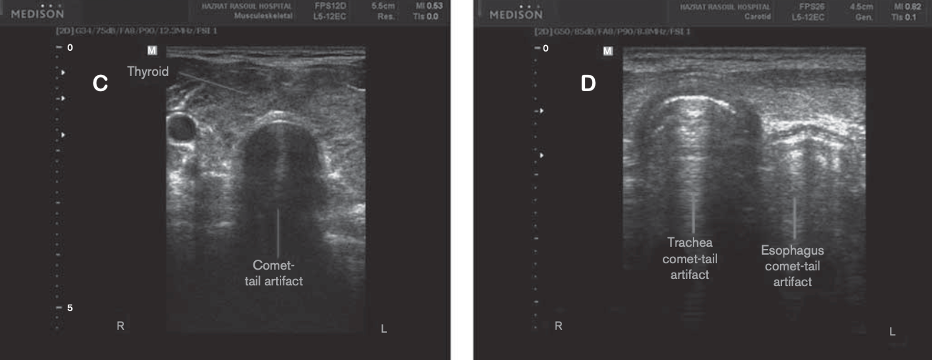Confirmation of ETT Position
Patient position: Supine
Probe Placement: Place the probe in the transverse plane at the level of the suprasternal notch (Figure 6) and identify the normal sonoanatomy including thyroid, trachea, and esophagus.
Scanning Tip: The position of the esophagus can be variable, adjust your scanning plane by slightly sliding and tilting the probe left and right to identify the position of the esophagus.

Figure 6. Airway POCUS using the linear probe in a supine patient in the with corresponding sonographic appearance
Dynamic Technique
Step 1: The dynamic evaluation Identification of normal sonoanatomy should be done before the intubation is started.
Step 2: During endotracheal intubation, assess for motion artefact (the snowstorm sign)
– Motion artefact will be visualized as the ETT is advanced in the trachea (Video 1).
– If the tube is inadvertently placed in the esophagus, a second air filled structure with comet tail artifact will appear, this is also called double trachea or double tract sign (Video 2).
Video 1: Dynamic ETT technique with proper tube placement showing snowstorm sign
Video 2: Dynamic ETT technique with improper tube placement within the esophagus (double tract sign).
Static Technique
Step 1: Prior to tube placement, static evaluation of tube placement is performed by placing probe in the transverse position at the suprasternal notch and identifying the normal sonoanatomy.
Step 2: Once the intubation is completed, the ultrasound is repeated.
– The image interpretation will be the same as the dynamic technique.
– With esophageal intubations, a second air filled structure with comet tail artifact will appear revealing the double tract sign (Figure 7).

Figure 7. Ultrasound position above the suprasternal notch showing comet tail artifact (c); and double-tract sign (d) [21]
